Lab Experiences
During the courses some laboratory sessions are carried out in teams and the topics are selected from the following:
- Pumps, motors and linear actuators: various volumetric pumps and motors (external and internal gear, piston and vane) of different manufacturers are disassembled, analyzed and contrasted to understand and appraise their peculiarities and mode of operation.
- Fluid power valves: some directional, pressure and flow control valves of different manufacturers are disassembled analyzed and contrasted to grasp the various underlying principles of operation and how these have been put into effect. Care is taken in interpreting the ISO graphical symbols of the various components.
- Load sensing (LS) components: an in-depth study is proposed of constitutive components of LS hydraulic circuits, such as proportional control valves with pre and post (anti saturation) pressure compensators, variable displacement pumps with differential pressure limiter.
- Steering servo systems: some steering servo systems used for hydrostatic steering (power steering) in passenger cars and off-road vehicles are dismantled and examined.
- Electro-hydraulic braking systems: the components present in a braking system are examined and commented (brake booster, tandem master cylinder, ABS module, ESP/VDC function).
- Didactic test rig: through direct observation and measurement of some physical quantities, the mode of operation is analyzed of different circuits and components assembled on three panels of the test rig. Interactions and characteristics of valves and actuators are appraised. Worth of mention are the practical settings of relief, reducing and sequence valves, implications in series and parallel operation of linear actuators, velocity control of rotary motors with constant and variable loads via variable restrictors and flow control valves.
- Test rig for overcentre (OVC) valves characterization: through direct measurement of pressure, flow and angular speed the steady state characteristics of a winch (orbit motor) loaded with either resistant or overrunning loads are obtained. The winch, subject to overrunning loads, is controlled by an OVC valve, load hold at stand still being granted by an integral multi disc brake.
- Load sensing (LS) test rig: through measurement of pressures and flow rates, the working principles of a LS system with both fixed and variable displacement pumps are analyzed. More specifically load controllability and energy saving, pressure and flow saturation, the use of a LS hydrostatic steering unit with priority valve.
- Test rig for electrohydraulic servovalves: main steady-state characteristics of either a servovalve (nozzle-flapper or jet-pipe) or a proportional valve are obtained. In particular flow-current curve at constant pressure drop with no load, flow-pressure drop (load) at constant current and leakage test.
- Simulation: briefly introducing a commercial simulation environment, problems in modelling and simulation of simple components and systems are presented. Students have the opportunity to perform simulations to gain direct experience of the approach and gain perception of the involved potentials.
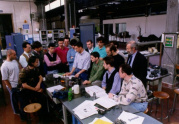 Course Oleodinamica e Pneumatica, late nineties
Course Oleodinamica e Pneumatica, late nineties
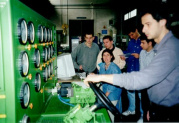
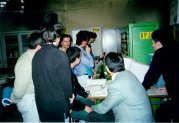
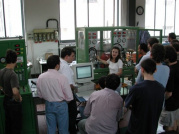
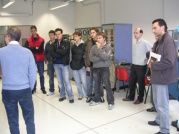
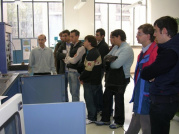
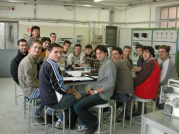
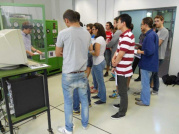 Course Oleodinamica, A.Y. 2011-2012
Course Oleodinamica, A.Y. 2011-2012
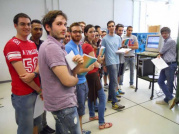 Course Oleodinamica, A.Y. 2011-2012
Course Oleodinamica, A.Y. 2011-2012
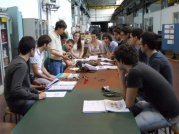 Course Oleodinamica, A.Y. 2011-2012
Course Oleodinamica, A.Y. 2011-2012
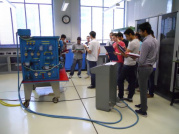 Course Fluid Power I, A.Y. 2014-2015
Course Fluid Power I, A.Y. 2014-2015
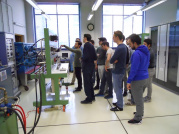 Course Automotive Fluid Power Systems, A.Y. 2015-2016
Course Automotive Fluid Power Systems, A.Y. 2015-2016
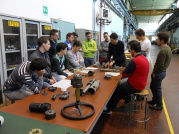 Course Automotive Fluid Power Systems, A.Y. 2015-2016
Course Automotive Fluid Power Systems, A.Y. 2015-2016
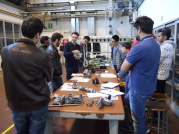 Course Automotive Fluid Power Systems, A.Y. 2015-2016
Course Automotive Fluid Power Systems, A.Y. 2015-2016
 Course Fluid Power I, AY. 2018/2019
Course Fluid Power I, AY. 2018/2019
 Course Automotive Fluid Power Systems, A.Y. 2015-2016
Course Automotive Fluid Power Systems, A.Y. 2015-2016
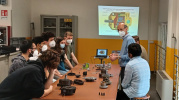 Course Fluid Power I, A.Y. 2021-2022
Course Fluid Power I, A.Y. 2021-2022
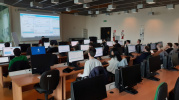 Course Automotive Fluid Power Systems, A.Y. 2022-2023
Course Automotive Fluid Power Systems, A.Y. 2022-2023
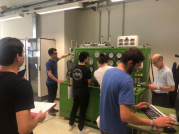 Mobile and Industrial Fluid Power, A.Y. 2023-2024
Mobile and Industrial Fluid Power, A.Y. 2023-2024
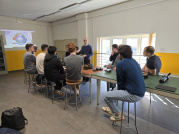 Mobile and Industrial Fluid Power, A.Y. 2024-2025
Mobile and Industrial Fluid Power, A.Y. 2024-2025
